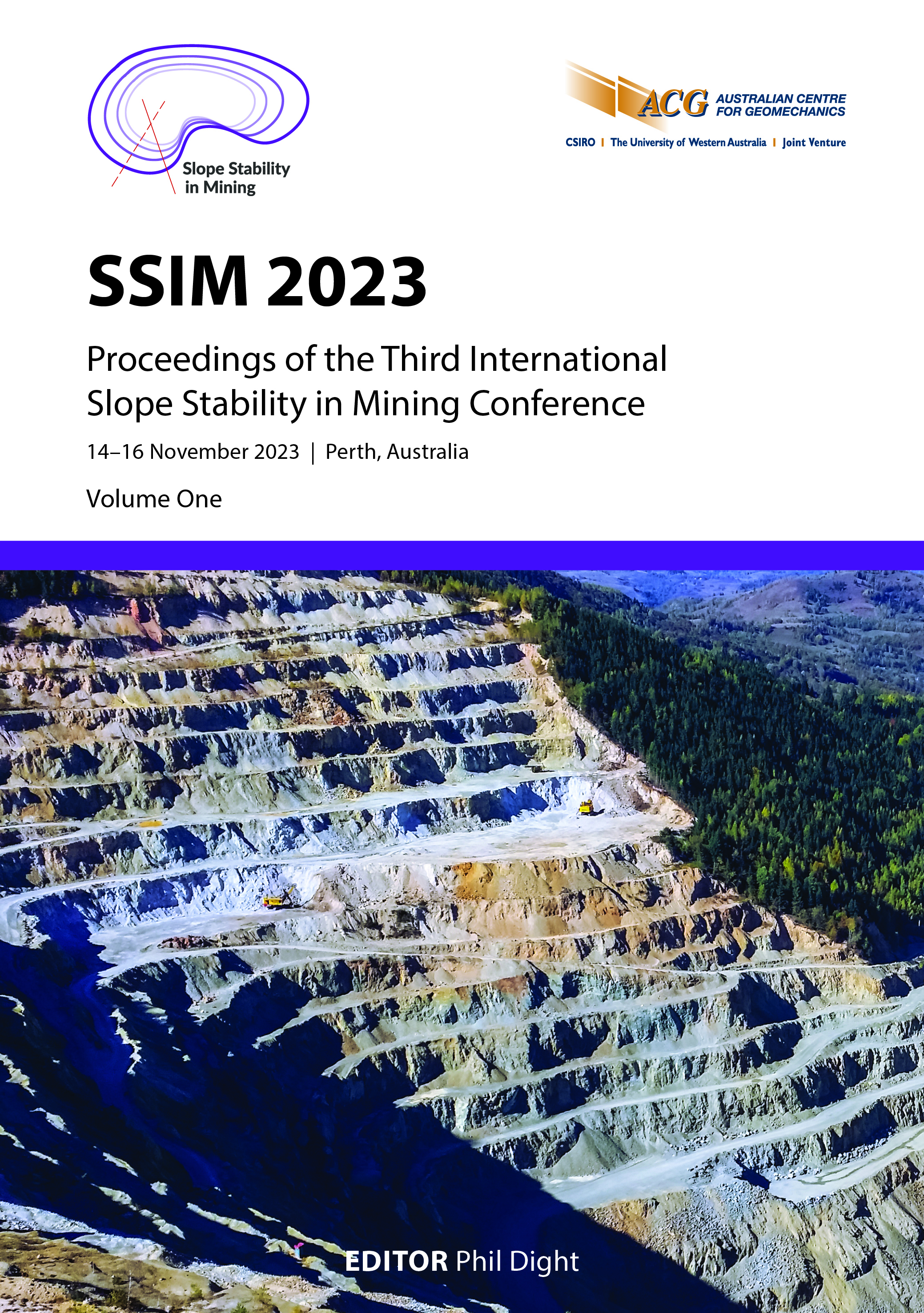Data overload: Does more data really resolve uncertainty?

|
Authors: Duran, A |
DOI https://doi.org/10.36487/ACG_repo/2335_34
Cite As:
Duran, A 2023, 'Data overload: Does more data really resolve uncertainty?', in PM Dight (ed.), SSIM 2023: Third International Slope Stability in Mining Conference, Australian Centre for Geomechanics, Perth, pp. 525-534, https://doi.org/10.36487/ACG_repo/2335_34
Abstract:
The author presents a case study where ongoing drilling campaigns coupled with laboratory testing were utilised to assess the geotechnical characteristics along strike in an area of complex geology. While ‘more’ geotechnical logging is paramount in providing a spatial understanding and resolving uncertainties in geology and structure, the author’s experience with the laboratory testing is somewhat contrary. For the case study, laboratory testing had been carried out on a campaign basis over an 11-year period, resulting in over 200 direct shear (DS) tests, 1,200 unconfined compressive strength (UCS) tests and 250 triaxial (TXL) tests. This paper highlights issues that are encountered with such extensive laboratory data. UCS testing, using point values, has well-defined methodologies in statistical treatment and assessing uncertainty and reliability. However, tractable methods to deal with DS and TXL are not as well-defined. The paper highlights the issues and presents what appears to be increasing uncertainty with more data, contrary to the commonly held view that more testing is better.
Keywords: uncertainty, laboratory testing, UCS testing, direct shear testing
References:
Alejano, LR, Gonzalez, J & Muralha, J 2012 ‘Comparison of different techniques of tilt testing and basic friction angle variability assessment’, Rock Mech Rock Eng, vol. 45, pp. 1141–1143.
Barton, N 1976, ‘The shear strength of rock and rock joints’, International Journal of Rock Mechanics & Mining Sciences, vol. 13, pp. 255–279.
Cramer, H 1999, Mathematical Methods of Statistics, Princeton University Press, Princeton.
Fillion, M-H & Hadjigeorgiou, J 2013, ‘Reliability of strength estimates based on limited laboratory data’, in PM Dight (ed.), Slope Stability 2013: Proceedings of the 2013 International Symposium on Slope Stability in Open Pit Mining and Civil Engineering, Australian Centre for Geomechanics, Perth, pp. 163–176,
Gill, DE, Corthésy, R & Leite, MH 2005a, ‘Determining the minimal number of specimens for laboratory testing of rock properties’, Journal of Engineering Geology, vol. 78, issue 1, pp. 29–51.
Gill, DE, Corthésy, R & Leite, MH 2005b, ‘A statistical approach for determining practical rock strength and deformability values from laboratory tests’, Journal of Engineering Geology, vol. 78, issue 1, pp. 53–67.
Hencher, SR 2012, ’Discussion of Alejano, Gonzalez and Muralha’, Rock Mechanics and Rock Engineering, vol. 45, pp. 1137–1139.
Hoek, E 2004, Rock Engineering, Course notes, Canada, 313 p.
Maldonado, A & Dight, PM 2020, ‘The shear strength of bedding partings in shales of the Pilbara: the similarity of non-dilatational angles, mineralogy relationships, and nominal roughness’, in PM Dight (ed.), Slope Stability 2020: Proceedings of the 2020 International Symposium on Slope Stability in Open Pit Mining and Civil Engineering, Australian Centre for Geomechanics, Perth, pp. 551–564,
Read, J 2009, ‘Data uncertainty’, in J Read & P Stacey (eds), Guidelines for Open Pit Slope Design, CRC Press, Boca Raton.
© Copyright 2025, Australian Centre for Geomechanics (ACG), The University of Western Australia. All rights reserved.
View copyright/legal information
Please direct any queries or error reports to repository-acg@uwa.edu.au
View copyright/legal information
Please direct any queries or error reports to repository-acg@uwa.edu.au

